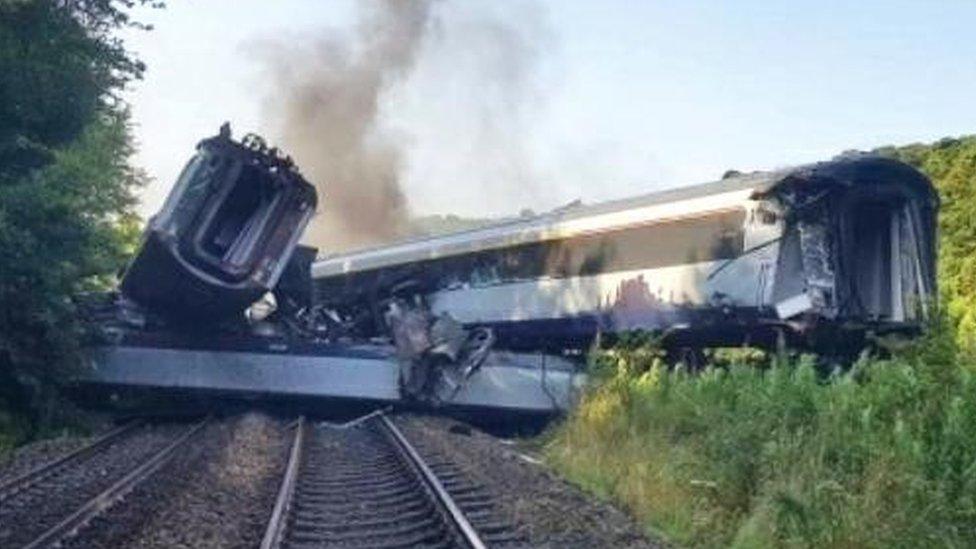Stonehaven train derailment: What we know
- Published
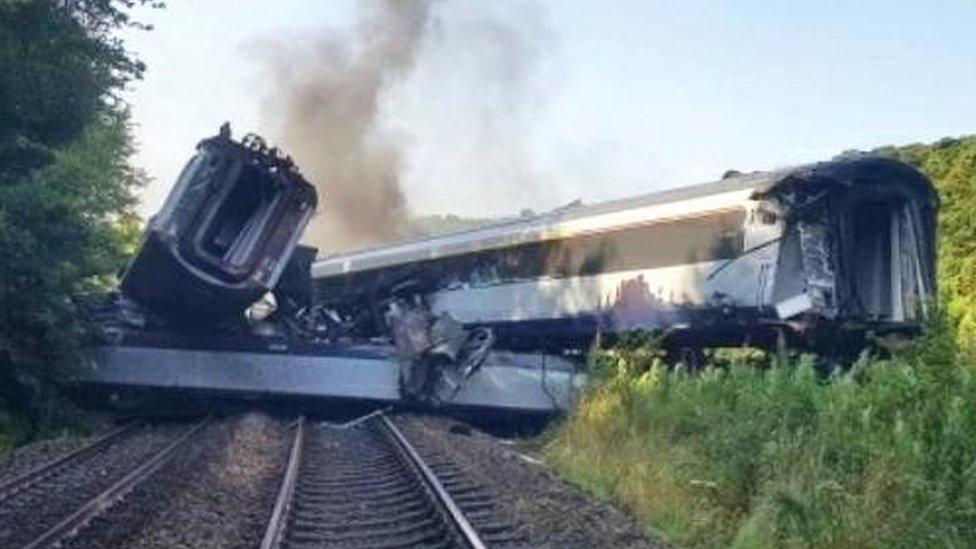
The train was badly damaged as it came off the rails
Three people died after a ScotRail train from Aberdeen to Glasgow left the rails near Stonehaven in Aberdeenshire on Wednesday morning.
Weather conditions had been poor, with thunder storms and torrential rain causing flooding and travel disruption in the east of Scotland.
What happened?

The passenger service, which was made up of two locomotives and four carriages, set off from Aberdeen at 06:38 and was heading for Glasgow Queen Street
It stopped at Stonehaven station on time at 06:54, but British Transport Police was told at 09:43 that the train had crashed.
Investigators say the train had headed south from Stonehaven before being stopped by a signaller, who had received a report that a landslip was blocking the line between Carmont and Laurencekirk.
A decision was taken for the train to return to Aberdeen, but in order for it to turn around it had to be switched back onto the northbound track.
The train had to reverse back to a set of points so it could be redirected.
As the points are manually operated, the train had to wait until an engineer could drive to the location and operate the points.

The train then continued its journey back towards Aberdeen, but had only travelled about 1.4 miles (2.2 km) when it hit another landslip at 09:40
As the track curved to the right, the train continued in a straight line for about 90m (100 yards) until it hit the parapet of a bridge.
The leading locomotive continued over the bridge and then fell down an embankment, followed by the third passenger carriage.
The first passenger carriage landed on its roof, perpendicular to the track, with the second passenger carriage also overturning and landing on top of it.
The fourth passenger carriage remained upright and attached to the rear locomotive, also landing on the first carriage.
The rear locomotive derailed, but remained upright.
The authorities were alerted to the incident minutes later - including by a member of the public who had seen billowing smoke.
An off duty conductor who was travelling on the train also walked about a mile to a signal box to raise the alarm.
Network Rail and emergency services were dispatched to the scene, and the line was closed.
Who was on the train at the time?
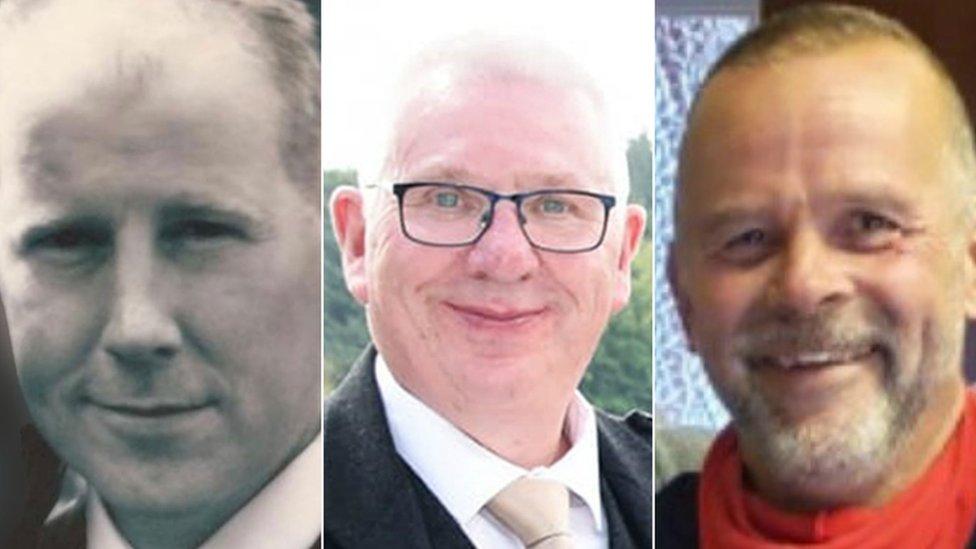
Brett McCullough, Donald Dinnie and Chris Stuchbury all died at the scene
Driver Brett McCullough, conductor Donald Dinnie and a passenger - Christopher Stuchbury - all died at the scene.
All six of the other people on the train were taken to hospital, although four were subsequently discharged.
How fast was the train going?
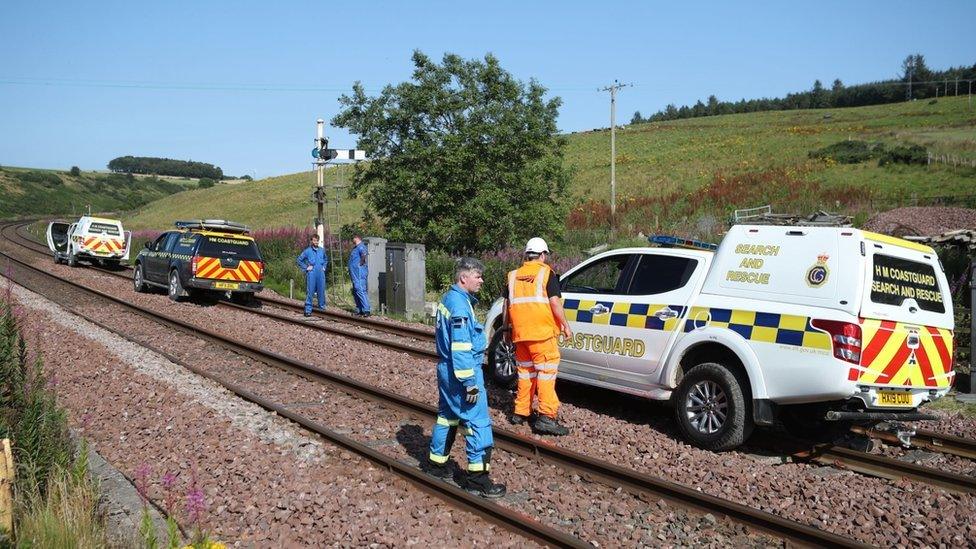
Emergency services were called to the area on Wednesday morning
Derailment investigation specialist Mike McLoughlin told BBC Scotland that aerial footage from the site appeared to suggest that the train had been travelling at a "pretty fair speed" when it came off the track.
The force of the front locomotive going down the embankment would have created a jackknife effect, lifting and twisting the couplers between the coaches behind and causing them to break and separate.
He also said that the photographs showed the track is intact, with the sleepers in good condition.
And he said investigators would be attempting to establish the exact point where the train initially left the track.
He said this location would show how the wheels left the rail, and could provide "strong clues as to what happened".
Did climate change play a part?

BBC science editor David Shukman says it has long been recognised that landslips are one of the greatest risks to Britain's railways - and that a changing climate will make them more likely.
Heatwaves and droughts can dry out the steep embankments beside the tracks, and over the years start to weaken them.
Heavy rain can then saturate and erode the soil, undermining its strength.

A health and safety report by the Office of Rail and Road, external last month warned of a spike in landslips in the UK.
Andrew Haines, Network Rail's chief executive, said the UK continues to have the safest major railway in Europe, but that climate change was an increasing challenge.
But he said the network was designed for a temperate climate, but the country was experiencing more extremes such as storms and floods.
Mr Haines added: "Although we can address them on the ground with precautionary measures, we are acutely aware we need a long-term resolution, and we had already secured additional funding and resources to help achieve this."
He said the crash was "a tragedy, a truly horrific event", and that understanding what happened was "the key to making sure it never occurs again".
How is the crash being investigated?
A joint investigation is being carried out by Police Scotland, British Transport Police and the Office of Rail and Road, the independent regulator.
They will be under the direction of prosecutors from the Crown Office and Procurator Fiscal Service.
In parallel, an independent safety investigation is being carried out by the Rail Accident Investigation Branch (RAIB).
It may take up to a year before the full findings are available from the RAIB.
In the meantime, Network Rail is to carry out detailed inspections of high-risk trackside slopes with similar characteristics to the site of the Aberdeenshire crash.
- Published14 August 2020
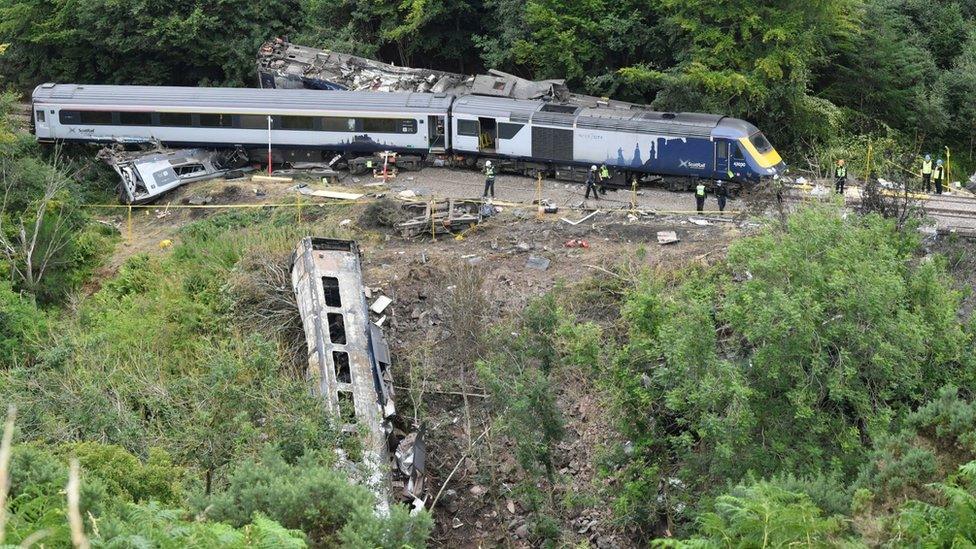
- Published13 August 2020

- Published13 August 2020

- Published12 August 2020
